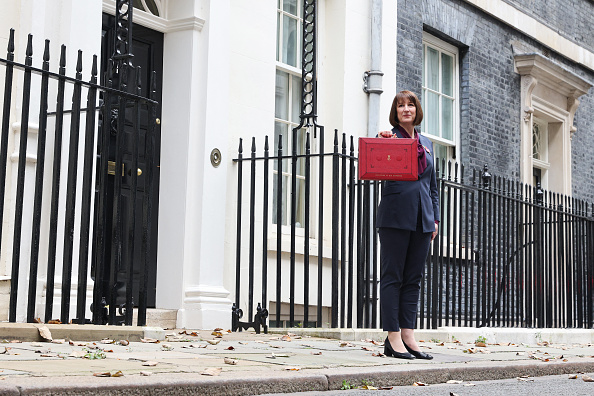Retailers with strong e-commerce offerings are defying sluggish sector average growth rates by double-digit margins amid the evolving structure of global retail. U.S. and Chinese e-commerce giants, Amazon, Alibaba, and JD.com averaged 30 per cent growth in 2016, while the rest of the global retail market managed just 4.3 per cent, according to a new retail growth index from OC&C Strategy Consultants and Financo released today (October 4, 2017).
Defying Gravity divides the top 200 global retailers with above £250 million in revenues from around 20 geographies into those valued at more than or less than £2.5 billion, and ranks them by revenue growth.
Amazon is the clear leader among the larger businesses, after growing by 27 per cent (£23.5 billion) in 2016, followed by Chinese rival JD.com (£8 billion; 41 per cent), Home Depot (£4.9 billion; seven per cent), and Lidl, owned by the Schwartz Group (£4.8 billion; seven per cent).
With access to an estimated 40 per cent of UK households and members spending twice as much as non-members, Prime has been a key growth driver for Amazon. Alexa is now poised to continue the momentum, with user numbers expected to hit 128 million by 2020 – each of them typically spending about ten per cent more than non-users.
Online pure-players beat sector average growth
E-commerce businesses also dominate the top of the growth table for retailers under £2.5 billion, with online pure-players leading the way. Ranking first, meal kit provider Blue Apron grew by 134 per cent (£370 million) in 2016 – almost double the rate of luxury online fashion platform Farfetch in second, which saw a 70 per cent (£268 million) revenue boost. British e-commerce retailer The Hut Group came in at third, having grown by 50 per cent (£168 million).
These new platform-based businesses are also beating their sectors by large margins. Blue Apron dwarfed the food and beverage industry’s average growth rate of around three per cent, while Farfetch and fellow British online fashion platform ASOS, which grew by 70 per cent and 26 per cent respectively, towered above the global apparel sector’s average growth of two per cent.
Fastest-growing UK retailers polarised between value and luxury brands
UK brands make up over half of the global top 20 fastest-growing retailers under £2.5 billion, with both luxury (Farfetch, Harrods, Jimmy Choo, Yoox Net-A-Porter) and value players seeing strong growth. Farfetch leads the UK’s top 20 fastest-growers in percentage terms, while value players such as B&M, The Range and Savers have also seen impressive growth, adding almost £550m in revenue between them from 2015-2016. This trend is typified by the similar growth rates achieved by discounter B&M and luxury department store Harrods (25 per cent and 23 per cent respectively).
Anita Balchandani, partner at OC&C Strategy Consultants, says, ‘In the UK, the growth outliers have defied pessimistic forecasts by either clarifying their market positioning into value or luxury very clearly or by single-mindedly pursuing online growth.
‘There does not appear to be a growth premium for multi-channel retailers, but rather it’s the online pure-players or the store-led value formats that are finding the biggest growth.
‘To find market-beating growth, brands must have a deep understanding of multiple factors, including how to compete with the rising e-commerce ecosystems, how to capitalise on the growth in digital channels and where M&A could confer a strategic advantage.’
Ashish Burman, managing director and head of Financo’s European operations, says, ‘Outside China, growth has generally been hard to find for retailers worldwide. However, as this latest research shows, brands that have embraced new business models centred on providing superior e-commerce experiences have outperformed their industry peers.
‘As the larger e-commerce platforms extend their eco-systems further into our everyday lives, retailers across sectors will have to constantly re-evaluate their strategies to compete and maintain consumer preference.’
Defying Gravity reveals a number of other key themes that define growth across various retail sectors, including:
M&A is a core growth driver for retailers globally
-M&A was one of the three main drivers of growth across the Top 50 global retailers.
-Outside of the US, M&A was the primary growth driver for 36 per cent of the Top 50, while organic growth and international expansion were the main growth drivers for 32 per cent respectively.
-In the US, organic growth was the key driver for 64 per cent of the Top 50 brands, followed by M&A at 28 per cent, with international expansion the main driver for a further eight per cent.
Improving perception of quality drives sales for discounters
-Rising quality and trust ratings for discounters has helped maintain growth momentum for key players in this sector.
-An increase of 5.3 points between 2012 and 2016 in Lidl’s quality rating has supported sales growth of nine per cent from 2015-2016.
-Likewise, B&M grew by 19 per cent between 2015 and 2016 following a 3.7-point uptick in its quality rating since 2012, with fellow discounters such as Aldi seeing similar correlations.
-This trend has helped Aldi to break into the global index’s top eight fastest-growing retailers, above the world’s biggest retailer Walmart, having increased revenue by £3.8 billion from 2015-2016.
-Among UK supermarkets, Lidl has seen the biggest quality and trust perception increase, rising to No.4 for quality behind M&S, Waitrose and Sainsbury’s, and third for trust behind Waitrose and M&S. Aldi isn’t far behind, ranking 7th for quality, above Tesco, and 5th for trust.
Share of online sales in apparel grows as the sector becomes a twin-track market
-The share of apparel sales attributed to e-commerce has increased its in recent years, and is projected to grow by 19 per cent in the -UK between 2012 and 2020, compared with 15 per cent in the USA and 23 per cent in China.
-This trend has helped power faster growth for the purely online clothing retailers, which grew by an average of 14 per cent from 2015-2016 – twice as fast as multi-channel players at seven per cent. ASOS saw a surge in global sales revenue of over £300 million (28 per cent) in the period.
-Sportswear sales have continued to climb, with sales growing at eight per cent in the UK between 2012 and 2016, with a further seven per cent expected between 2016 and 2020, compared with flat growth for the apparel industry as a whole.
-Leveraging this trend, JD Sports added £558 million (31 per cent) in revenue between 2015-2016 – the second-highest sales growth among UK retailers in absolute terms after Primark, which grew by £602 million (11 per cent).








